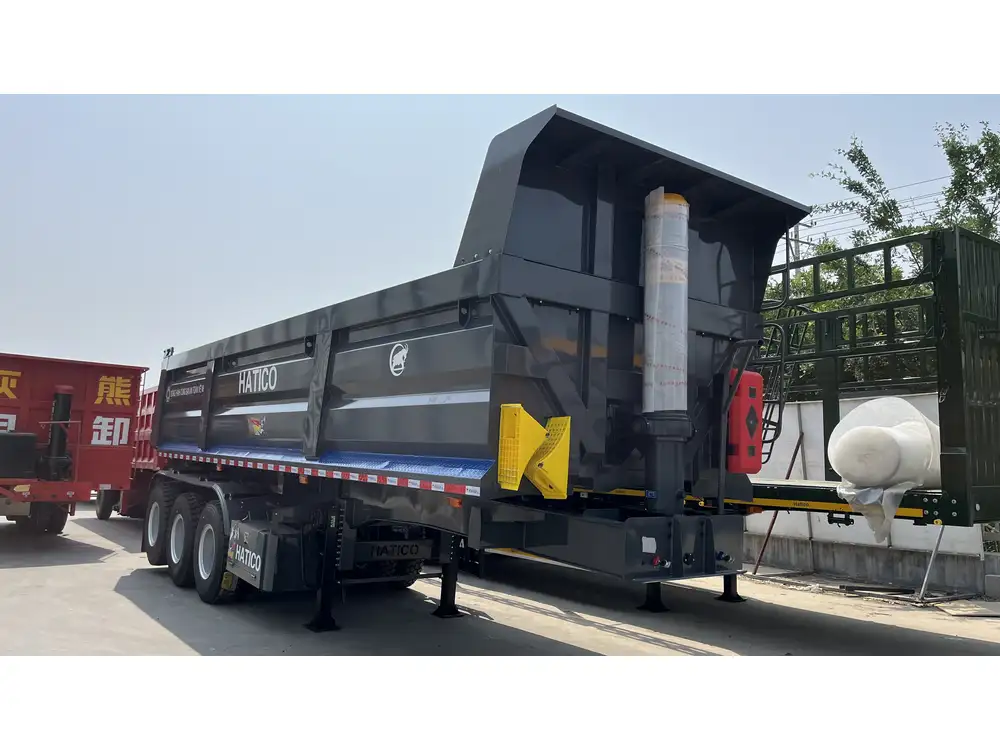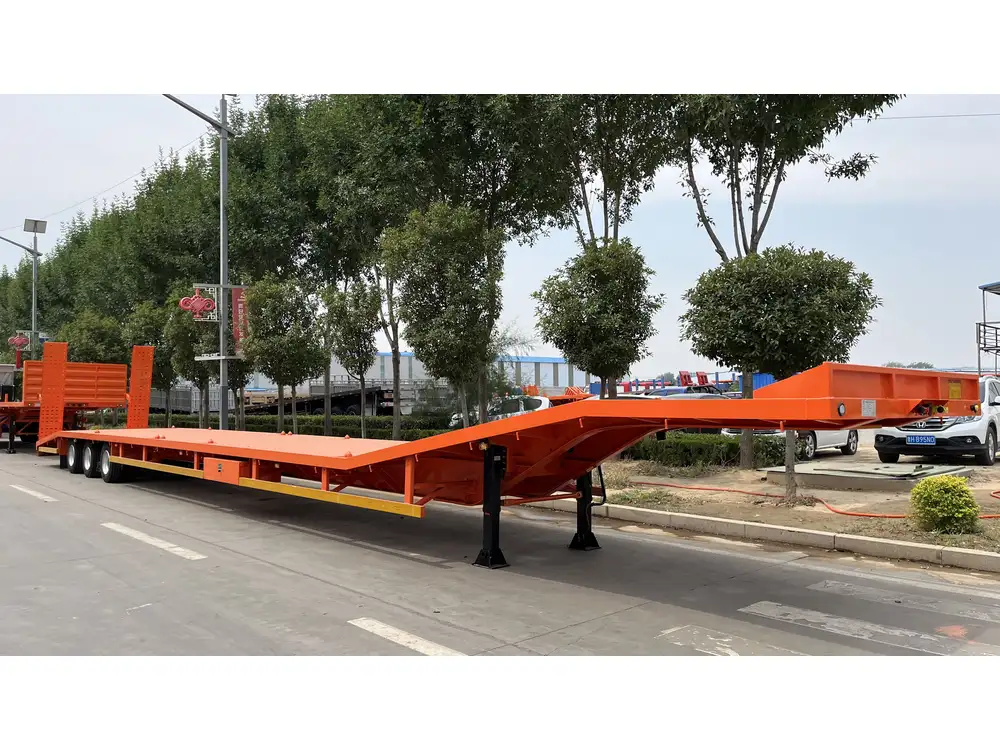Building your own dump trailer can be a rewarding venture that combines craftsmanship with practical utility. Whether you’re looking to transport materials for landscaping, construction, or agricultural purposes, a custom dump trailer can cater to your specific needs. This guide will walk you through the essential steps and considerations involved in constructing a dump trailer, intended for both the novice and seasoned builders.
Understanding the Basics of Dump Trailers
What is a Dump Trailer?
A dump trailer is a trailer equipped with a hydraulic lift to raise its bed, making it easier to unload materials. This feature is invaluable for those in industries like construction, landscaping, and waste management. The mechanics behind these trailers enable them to handle heavy loads and make unloading quick and efficient.

Key Features of a Dump Trailer
- Hydraulic Lift: A crucial component that enables the dumping action.
- Durable Frame: Typically constructed from heavy-duty steel or aluminum for stability and longevity.
- Loading Capacity: The weight that the trailer can safely transport varies with size and design.
- Safety Features: Brakes, ramps, and lighting are essential to ensure safe operation.
Types of Dump Trailers
| Type | Description | Best For |
|---|---|---|
| Single Axle | Lightweight, more maneuverable. | Homeowners and small jobs |
| Tandem Axle | Increased carrying capacity and stability. | Larger construction projects |
| Gooseneck | A hitch style offering great stability. | Heavy-duty hauling and towing |
| Utility Dump | Versatile design suitable for various uses. | Multi-purpose applications |
Materials Needed to Build a Dump Trailer

Essential Components
Frame and Body Material:
- Steel (for durability)
- Aluminum (for lightweight)
Axles and Suspension:
- Determining the type is essential based on the trailer’s intended load.
Hydraulic System:
- Pump, actuator, and hydraulic lines are integral for dump functionality.
Electrical Components:
- Lights, wiring harnesses, and a battery for the hydraulic pump.
Tools Required
- Welding Machine: For constructing the frame and body.
- Cutting Tools: To shape the raw materials.
- Drill: For securing components together.
- Measuring Tools: Essential for accuracy during construction.
Step-by-Step Guide on How to Build a Dump Trailer

Step 1: Planning and Design
Before diving into construction, having a well-thought-out plan is paramount. Consider the following:
- Purpose and Usage: Determine what materials you will frequently transport.
- Dimensions: Decide on the length, width, and height based on your needs.
- Loading Capacity: Calculate the maximum load you will carry to ensure your design can accommodate it.
Step 2: Cut and Prepare the Materials
Once your design is in place, you can begin preparing the materials:
- Frame Construction: Use heavy-duty steel or aluminum to cut the frame pieces.
- Body Panels: Shape the panels that will form the trailer’s bed.
- Axle Placement: Mark the positions where the axles will be integrated.
Step 3: Assemble the Frame
- Weld the Frame: Begin by welding the frame together, ensuring it is sturdy and level.
- Attach Axles: Secure the axles in place, taking care to properly align them for balance.

Step 4: Install the Hydraulic System
- Pump and Cylinder Placement: Position the hydraulic pump where it can be easily accessed. Attach the hydraulic cylinder securely to the bed area.
- Routing Lines: Ensure that the hydraulic lines are routed correctly and do not interfere with the movement of the trailer.
Step 5: Build the Trailer Bed
- Welding Bed Panels: Weld the bed panels onto the frame. Ensure that this is reinforced to handle the stress of heavy loads.
- Install Side Walls: If desired, sides can be added for increased capacity.
Step 6: Electrical Setup
- Wiring Harness: Run the wiring for the hydraulic pump and the taillights.
- Battery Placement: Choose a secure location within the trailer for the battery that powers the hydraulic system.

Step 7: Final Touches and Safety Checks
- Braking System: Install a brake system if your trailer requires it.
- Safety Features: Add reflective tape and lighting for visibility.
- Weight Balance Check: Ensure that the weight distribution is even for safe towing.
Troubleshooting Common Construction Issues
Problem: Hydraulic System Failure
Symptoms: The bed does not raise or lower properly.
- Solution: Check for hydraulic fluid leaks and ensure the pump is operating correctly. Inspect hoses and connections for blockages or damages.

Problem: Structural Instability
Symptoms: The trailer feels wobbly or off-balance.
- Solution: Review your welds and the frame assembly. Ensure the axles are not overloaded and check that the load is centered.
Problem: Electrical Failures
Symptoms: Lights flicker or do not function.
- Solution: Inspect the wiring harness for loose connections or damaged wires. Ensure the battery is fully charged.
Maintenance Tips for Your Dump Trailer
Regular maintenance ensures long-term performance and safety. Consider these simple practices:
- Routine Inspections: Regularly check the hydraulic systems for leaks, the frame for rust, and the wiring for damage.
- Lubrication: Apply lubricant to hinges and moving parts to minimize wear and tear.
- Tire Maintenance: Keep tires properly inflated and regularly check for signs of wear.

Conclusion
Embarking on the journey of building a dump trailer not only equips you with a useful tool for various applications but also enhances your skills as a craftsman. Each step from planning to construction, requires attention to detail and a commitment to quality workmanship. By following this comprehensive guide, you can ensure that your dump trailer meets your functional needs while standing the test of time.
Whether you’re considering building a single axle trailer for personal use or a tandem for commercial purposes, remember that knowledge is key. With careful planning, resourceful material selection, and diligent construction practices, the possibilities are endless. Equip yourself with the right tools, and set out to create a dump trailer that’s tailored to your specific demands—one that will serve you efficiently for years to come.



